
Philodendron is a large genus of flowering plants in the family Araceae. As of September 2015, the World Checklist of Selected Plant Families accepted 489 species; other sources accept different numbers. Regardless of number of species, the genus is the second-largest member of the family Araceae, after genus Anthurium. Taxonomically, the genus Philodendron is still poorly known, with many undescribed species. Many are grown as ornamental and indoor plants. The name derives from the Greek words philo- 'love, affection' and dendron 'tree'. The generic name, Philodendron, is often used as the English name.

Monstera deliciosa, the Swiss cheese plant or split-leaf philodendron is a species of flowering plant native to tropical forests of southern Mexico, south to Panama. It has been introduced to many tropical areas, and has become a mildly invasive species in Hawaii, Seychelles, Ascension Island and the Society Islands. It is very widely grown in temperate zones as a houseplant.
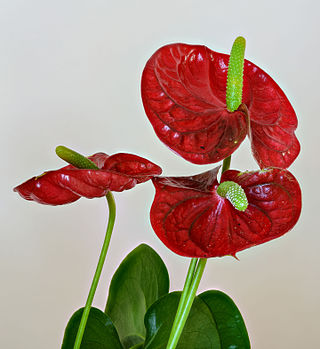
Anthurium is a genus of about 1,000 species of flowering plants, the largest genus of the arum family, Araceae. General common names include anthurium, tailflower, flamingo flower, and laceleaf.

Arum maculatum is a woodland flowering plant species in the family Araceae. It is native across most of Europe, as well as Eastern Turkey and the Caucasus.

Zantedeschia is a genus of eight species of herbaceous, perennial, flowering plants in the aroid family, Araceae, native to southern Africa. The genus has been introduced, in some form, on every continent.
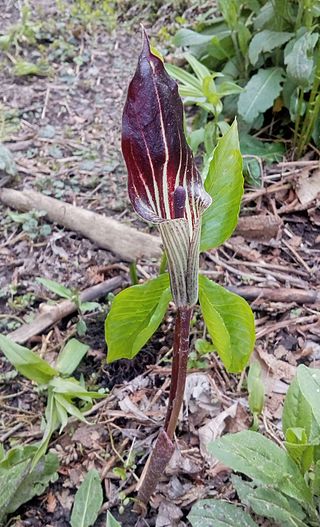
Arisaema triphyllum, the Jack-in-the-pulpit, is a species of flowering plant in the arum family Araceae. It is a member of the Arisaema triphyllum complex, a group of four or five closely related taxa in eastern North America. The specific name triphyllum means "three-leaved", a characteristic feature of the species, which is also referred to as Indian turnip, bog onion, and brown dragon.

Zamioculcas is a genus of flowering plants in the family Araceae, containing the single species Zamioculcas zamiifolia. It is a tropical herbaceous perennial plant, native to eastern Africa including Kenya, KwaZulu-Natal, Malawi, Mozambique,Tanzania, and Zimbabwe. Common names include Zanzibar gem, ZZ plant, Zuzu plant, aroid palm, eternity plant and emerald palm. It is grown as a houseplant mainly for its attractive glossy foliage and easy care. Zamioculcas zamiifolia is winter hardy to USDA Zones 9–10.

Philodendron hederaceum, the heartleaf philodendron is a species of flowering plant in the family Araceae, native to Central America and the Caribbean which is common in the houseplant trade. Philodendron hederaceum var. hederaceum, the "velvet philodendron," is a subspecies which is in the houseplant trade under its previous name of Philodendron micans. While toxic under certain conditions, it is also under current review for numerous health benefits.
Philodendron domesticum, also called the spadeleaf philodendron, the elephant ear philodendron, or burgundy philodendron, is a plant in the genus Philodendron. Its arrow-shaped glossy leaves grow to be 22 inches (56 cm) long and 9 inches (23 cm) wide when mature. Philodendron domesticum is also commonly grown as a houseplant in temperate climates.
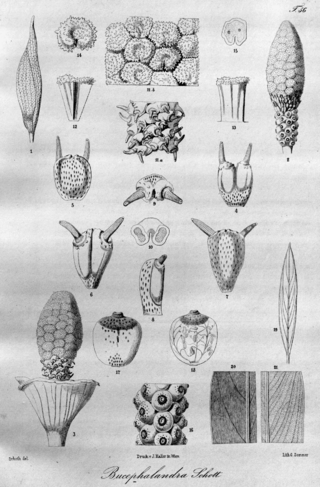
Bucephalandra is a genus of flowering plants in the family Araceae. There are 30 species of Bucephalandra which have been discovered in Borneo and have been formally described by S.Y. Wong and P.C. Boyce. Most of the species are found in Borneo. Bucephalandra are usually found growing as dense mats over stones or rocks in streams or rivers in moist tropical forest.

Thaumatophyllum bipinnatifidum is a plant in the genus Thaumatophyllum, in the family Araceae. Previously it was classified in the genus Philodendron within subgenus Meconostigma. The commonly used names Philodendron bipinnatifidum and Philodendron selloanum are synonyms. This plant is native to South America, namely to Brazil, Bolivia, Argentina, and Paraguay, but is also cultivated as a landscape plant in tropical, subtropical and warm temperate climates.
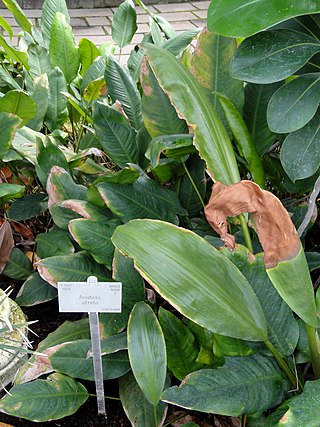
Anubias afzelii is a species belonging to the Aroid genus Anubias. It was first described scientifically by Heinrich Wilhelm Schott in 1857, based on material collected in Sierra Leone by Adam Afzelius, after whom the species was named. The genus Anubias was described simultaneously, with only A. afzellii belonging to it, which therefore is the type species of the genus. No other species currently placed in the genus Anubias was described earlier and A. afzelii was therefore the first species of this genus known to science.

Anubias heterophylla is a species belonging to the Aroid genus Anubias. It was first described scientifically by Adolf Engler in 1879.

Anubias gigantea is an aquatic to riparian aroid species belonging to the genus Anubias, within the Araceae. It was first mentioned by Auguste Chevalier in 1920, based on material that he had collected in Guinea, West Africa. The formal description followed in 1939 by John Hutchinson. It is closely related to A. afzelii, basically only differing from that species by the form of the leaf-blade, with mature growth appearing somewhat different than the juvenile plants.

Thaumatophyllum is a genus of flowering plants in the arum family, Araceae. Its species are native to northern (tropical) South America.

Thaumatophyllum xanadu is a perennial plant belonging to the arum family Araceae and the genus Thaumatophyllum, formerly classified under the Meconostigma subgenus of Philodendron. This plant is native to Brazil, but is widely cultivated as a landscape plant in tropical, subtropical and warm temperate climates.
Anubias pynaertii is a species belonging to the Aroid genus Anubias. It was first described scientifically by Émile Auguste Joseph De Wildeman in 1910, based on material collected in Zaire by, among others, Léon Auguste Edouard Joseph Pynaert, after whom the species was named.

Anubias hastifolia is a species belonging to the Aroid genus Anubias. It was first mentioned by Adolf Engler in 1889 and described scientifically by him in 1893.
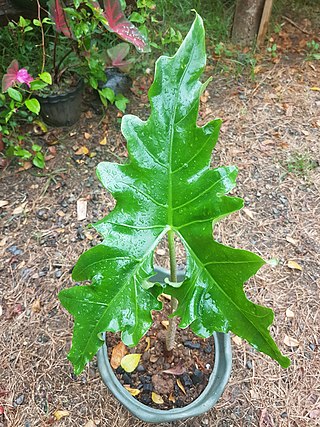
Alocasia nycteris, commonly known as the bat alocasia or the batwing alocasia, is a plant in the family Araceae. It is endemic to island of Panay in the Philippines. It is cultivated as an ornamental plant.
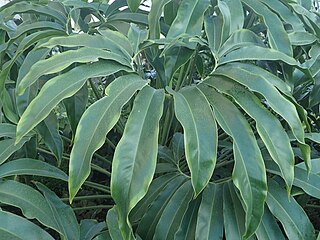
Thaumatophyllum spruceanum is a neotropical hemiepiphytic or scrambling plant in the genus Thaumatophyllum, in the family Araceae. It is native to northern South America.
















